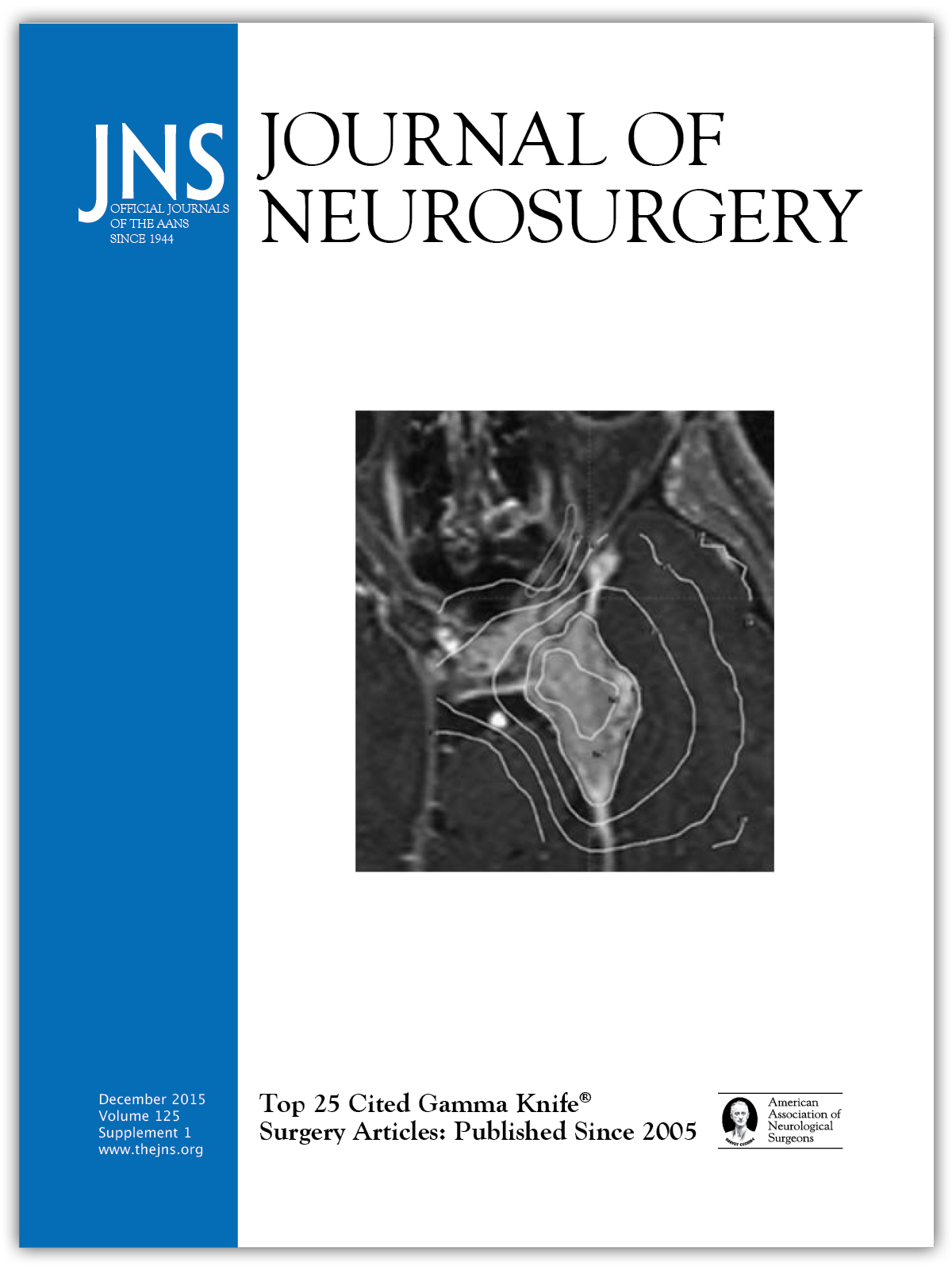Object
Trigeminal neuralgia pain causes severe disability. Stereotactic radiosurgery is the least invasive surgical option for patients with trigeminal neuralgia. Since different medical and surgical options have different rates of pain relief and morbidity, it is important to evaluate longer-term outcomes.
开云体育世界杯赔率
The authors retrospectively reviewed outcomes in 503 medically refractory patients with trigeminal neuralgia who underwent Gamma Knife surgery (GKS). The median patient age was 72 years (range 26–95 years). Prior surgery had failed in 205 patients (43%). The GKS typically was performed using MR imaging guidance, a single 4-mm isocenter, and a maximum dose of 80 Gy.
Results
Patients were evaluated for up to 16 years after GKS; 107 patients had > 5 years of follow-up. Eighty-nine percent of patients achieved initial pain relief that was adequate or better, with or without medications (Barrow Neurological Institute [BNI] Scores I–IIIb). Significant pain relief (BNI Scores I–IIIa) was achieved in 73% at 1 year, 65% at 2 years, and 41% at 5 years. Including Score IIIb (pain adequately controlled with medication), a BNI score of I–IIIb was found in 80% at 1 year, 71% at 3 years, 46% at 5 years, and 30% at 10 years. A faster initial pain response including adequate and some pain relief was seen in patients with trigeminal neuralgia without additional symptoms, patients without prior surgery, and patients with a pain duration of ≤ 3 years. One hundred ninety-three (43%) of 450 patients who achieved initial pain relief reported some recurrent pain 3–144 months after initial relief (median 50 months). Factors associated with earlier pain recurrence that failed to maintain adequate or some pain relief were trigeminal neuralgia with additional symptoms and ≥ 3 prior failed surgical procedures. Fifty-three patients (10.5%) developed new or increased subjective facial paresthesias or numbness and 1 developed deafferentation pain; these symptoms resolved in 17 patients. Those who developed sensory loss had better long-term pain control (78% at 5 years).
Conclusions
Gamma Knife surgery proved to be safe and effective in the treatment of medically refractory trigeminal neuralgia and is of value for initial or recurrent pain management. Despite the goal of minimizing sensory loss with this procedure, some sensory loss may improve long-term outcomes. Pain relapse is amenable to additional GKS or another procedure.



